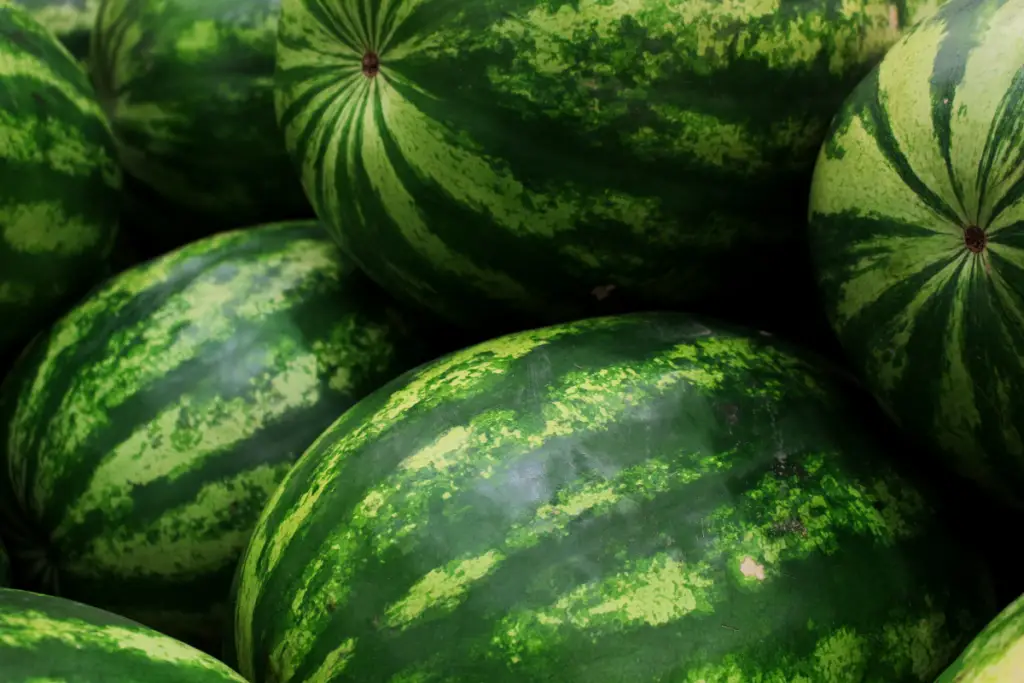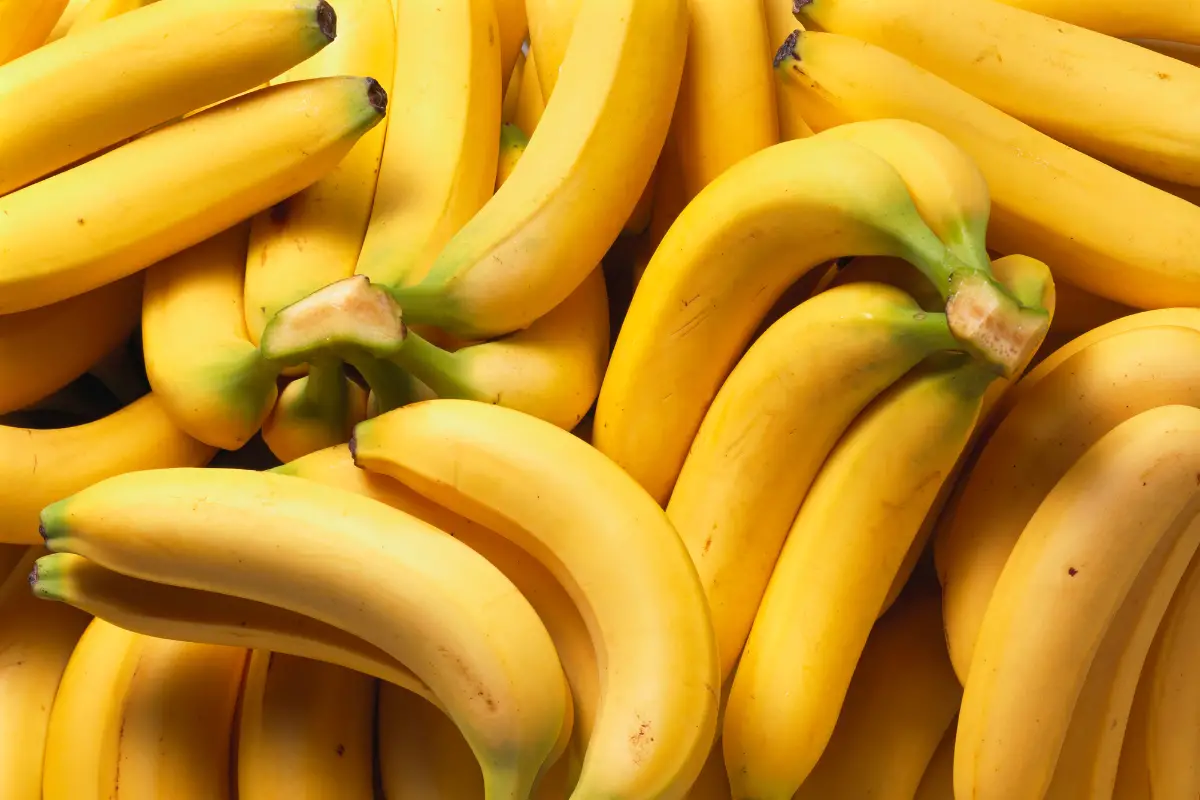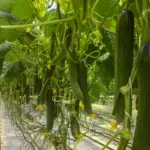Watermelons are a popular summer fruit that many people enjoy due to their refreshing taste and high water content.
However, some may wonder if watermelons grow on trees or if they have a different method of growth.
Contrary to what some may believe, watermelons do not grow on trees. Instead, they are grown on the ground or on a trellis.
While some fruits, such as apples and oranges, grow on trees, watermelons belong to the Cucurbitaceae family, which includes other plants like cucumbers, squash, and pumpkins.
These plants grow on sprawling vines that spread across the ground and produce large, round fruits.
There are many factors to consider when growing watermelons, including the type of soil, temperature, and sunlight.
While watermelons can be grown on the ground, some gardeners choose to grow them on trellises or even trees. However, it’s important to note that not all trees are suitable for growing watermelons.
The best type of tree for growing watermelons is one that is strong and sturdy enough to support the weight of the vines and the fruit.

Table of Contents
Understanding Watermelons
Watermelons are a type of fruit that belongs to the Cucurbitaceae family, which includes cucumbers, pumpkins, and squash.
Contrary to popular belief, watermelons do not grow on trees. Instead, they grow from vines that tend to spread out across the ground in open spaces.
The vines can grow up to six meters long, with each vine growing up to 2-4 fruits. So, the more vines you have, the more watermelons you can produce.
Watermelon plants are considered vine-like and have sprawling, creeping stems that can cover a significant area.
They need a lot of space to grow, up to 20 square feet per plant. Watermelons prefer a soil pH between 6.0 and 7.5, which is slightly acidic to neutral.
They do best in loamy, somewhat-sandy, well-drained soil. They can struggle in soil that contains too much clay and doesn’t drain well.
Watermelons have a hard outer rind and a juicy, sweet interior. The flesh can be red, pink, yellow, or white, depending on the variety.
The seeds are usually black, but some varieties have seedless fruit. Watermelon seeds are edible and are rich in magnesium, which is essential for bone health.
They are also a good source of protein, fiber, and healthy fats.
Watermelons are a popular summer fruit and are often eaten fresh or used to make refreshing drinks and desserts.
They are also a good source of vitamins A and C, as well as potassium and lycopene, which are antioxidants that help protect the body from damage caused by free radicals.
Growth Process of Watermelons
Watermelons are a type of fruit that belongs to the Cucurbitaceae family, which also includes cucumbers, squash, pumpkins, and gourds.
They are known for their sweet and juicy flesh, and are a popular summertime treat. The growth process of watermelons can be divided into three main stages: seed germination, vine development, and fruit formation.
Seed Germination
The growth process of watermelons begins with seed germination. Watermelon seeds are usually planted directly in the ground, as they do not transplant well.
The seeds require warm soil temperatures of at least 65°F (18°C) to germinate. Once the seeds are planted, they will begin to sprout within 7-10 days.
Vine Development
After the seeds have sprouted, the watermelon plant will begin to develop vines. These vines can grow up to 20 feet (6 meters) long and will start to spread out in all directions.
As the vines grow, they will produce male and female flowers. The male flowers are responsible for pollinating the female flowers, which will eventually develop into watermelons.
Fruit Formation
Once the female flowers have been pollinated, they will start to develop into watermelons. The watermelon fruit will continue to grow and mature over the course of several weeks.
During this time, the fruit will change color from green to a light yellow or cream color, and the rind will become hard and tough.
When the watermelon is fully ripe, it will have a hollow sound when tapped and the bottom of the fruit will have a yellow spot where it was resting on the ground.
In conclusion, watermelon growth is a fascinating process that involves seed germination, vine development, and fruit formation.
By understanding the growth process of watermelons, gardeners can better care for their plants and enjoy a bountiful harvest of sweet and juicy fruits.
Misconceptions About Watermelon Growth
Watermelons are a popular fruit that people often enjoy during the summer months. However, there are some misconceptions about how watermelons grow that are worth addressing.
One common misconception is that watermelons grow on trees. In reality, watermelons grow on vines that tend to spread out across the ground in open spaces.
The vines can grow up to six meters long, with each vine growing up to 2-4 fruits. So, the more vines you have, the more watermelons you can produce.
Another misconception is that watermelons need a lot of water to grow. While water is important for all plants, overwatering can actually harm watermelon plants.
It is important to water watermelon plants deeply but infrequently, allowing the soil to dry out slightly between waterings.
Some people also believe that watermelon seeds are harmful to eat. However, this is not true. In fact, watermelon seeds are a good source of protein, healthy fats, and minerals such as magnesium and zinc. Some people even roast watermelon seeds as a snack.
Overall, it is important to have accurate information about how watermelons grow in order to successfully grow them yourself or simply enjoy them as a tasty summer treat.
Why Watermelons Don’t Grow on Trees
Watermelons are a popular summer fruit that many people enjoy. However, some may wonder if watermelons grow on trees like other fruits such as apples, oranges, or pears.
The answer is no. Watermelons do not grow on trees, and there are several reasons why.
Firstly, watermelons belong to the Cucurbitaceae family, which includes other plants such as cucumbers, pumpkins, and squash.
These plants are known for their sprawling vines that grow along the ground or on trellises. Watermelon vines can grow up to six meters long and produce flowers and fruits on the runners.
Secondly, watermelons require a lot of space to grow because of their sprawling vines. If they were to grow on trees, they would not have enough space to spread out and produce the large, round, oblong fruits that they are known for.
Thirdly, watermelons are heavy fruits that require a lot of support. Trees may not be able to support the weight of the watermelon fruit, causing it to fall off prematurely or not grow to its full potential.
In conclusion, watermelons do not grow on trees. They require a lot of space and support to grow properly, which is not possible on a tree.
Watermelon vines should be allowed to grow along the ground or on trellises to produce the best possible fruits.
Comparison With Tree-Borne Fruits
Watermelons are often mistaken for tree-borne fruits due to their large size and round shape. However, watermelons do not grow on trees.
They belong to the Cucurbitaceae family, which includes other plants such as cucumbers, squash, and pumpkins.
These plants grow on sprawling vines spread across the ground, producing large, round, oblong fruits.
Tree-borne fruits, on the other hand, grow on trees and have a different set of characteristics. Here are some of the key differences between watermelons and tree-borne fruits:
- Plant Structure: Tree-borne fruits grow on trees, which have a woody stem and branches. Watermelons, on the other hand, grow on vines that spread across the ground.
- Fruit Size: Tree-borne fruits tend to be smaller in size compared to watermelons. For example, apples, oranges, and peaches are all smaller than a typical watermelon.
- Seed Distribution: Tree-borne fruits typically have seeds located in the center of the fruit, while watermelons have seeds distributed throughout the flesh.
- Flowering and Pollination: Tree-borne fruits typically produce flowers that are pollinated by bees or other insects. Watermelons, on the other hand, have both male and female flowers on the same plant and are pollinated by bees or other insects.
In summary, watermelons are not tree-borne fruits and have a different plant structure, fruit size, seed distribution, and flowering and pollination process compared to tree-borne fruits.
Conclusion
In conclusion, watermelons do not grow on trees. While some people may confuse watermelons with other melons that grow on trees, watermelons are actually a type of vine that grows on the ground.
To grow watermelons successfully, gardeners need to provide the right conditions, such as full sunlight, well-draining soil, and sufficient water. Watermelon plants also need room to spread out, so it is important to space them properly.
It is also important to note that watermelons should not be planted near other members of the Cucurbitaceae family, such as squash and cucumbers. Instead, they thrive in the company of cabbages, beans, or sweet corn.
Overall, with the right knowledge and preparation, gardeners can successfully grow watermelons and enjoy their sweet, juicy fruits for years to come.
- How to Dry Basil Leaves: A Professional Guide
- Is an Avocado a Fruit or Vegetable? Simple Answer and Explanation
- Does Pineapple Have Seeds? Exploring the Anatomy of Pineapples
- Blooming Through Winter: Can I Grow Vegetables Indoors in the Winter?
- What Can You Grow in a Greenhouse All Year Round: A Guide to Year-Round Greenhouse Gardening
- Are Blueberries Blue? Debunking the Myth of Their Color
















